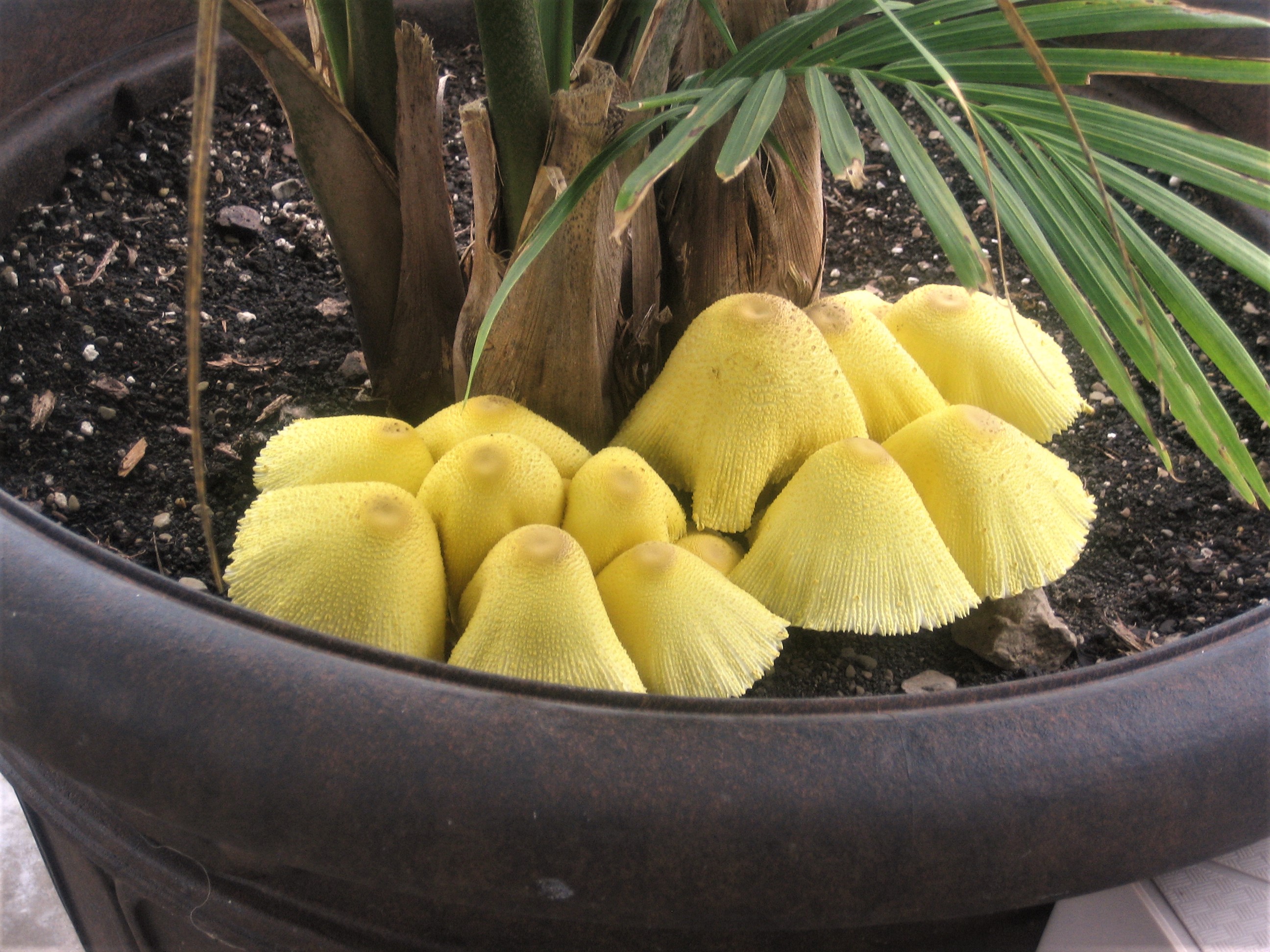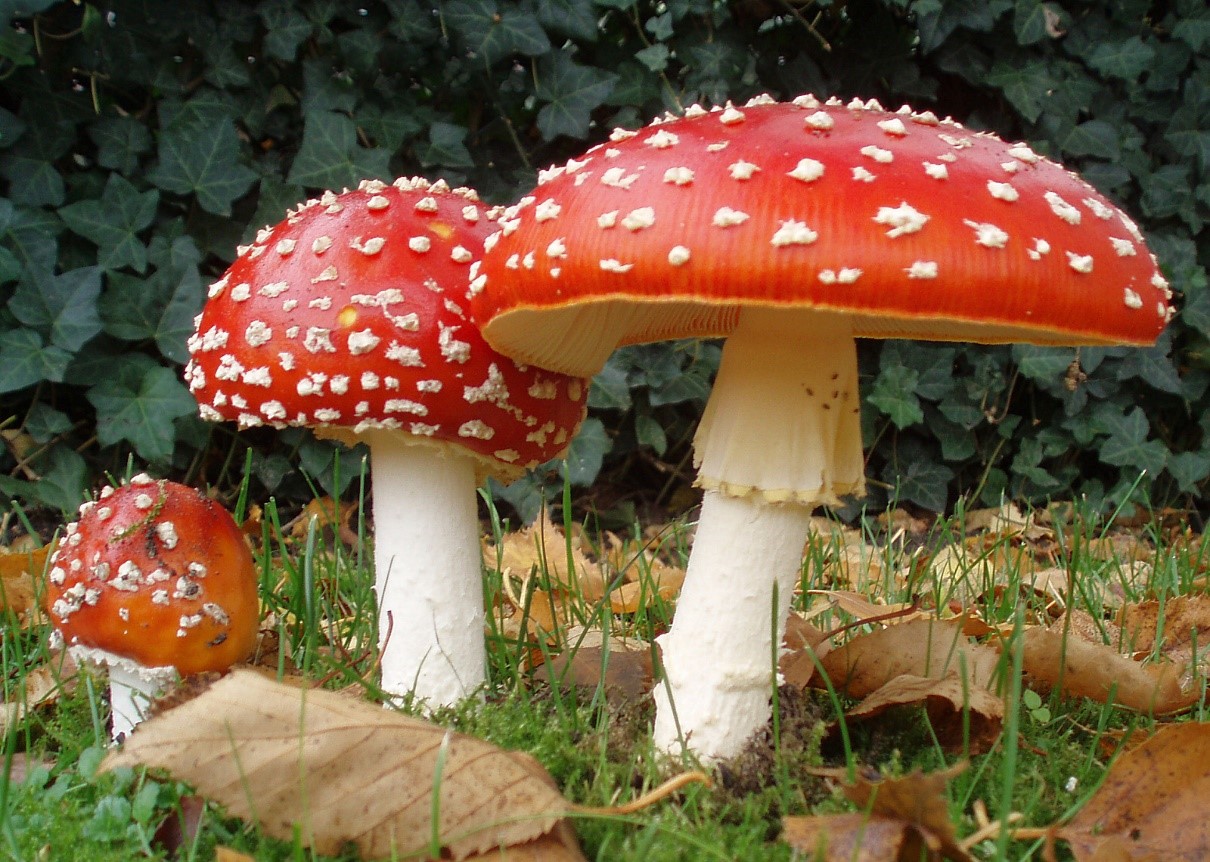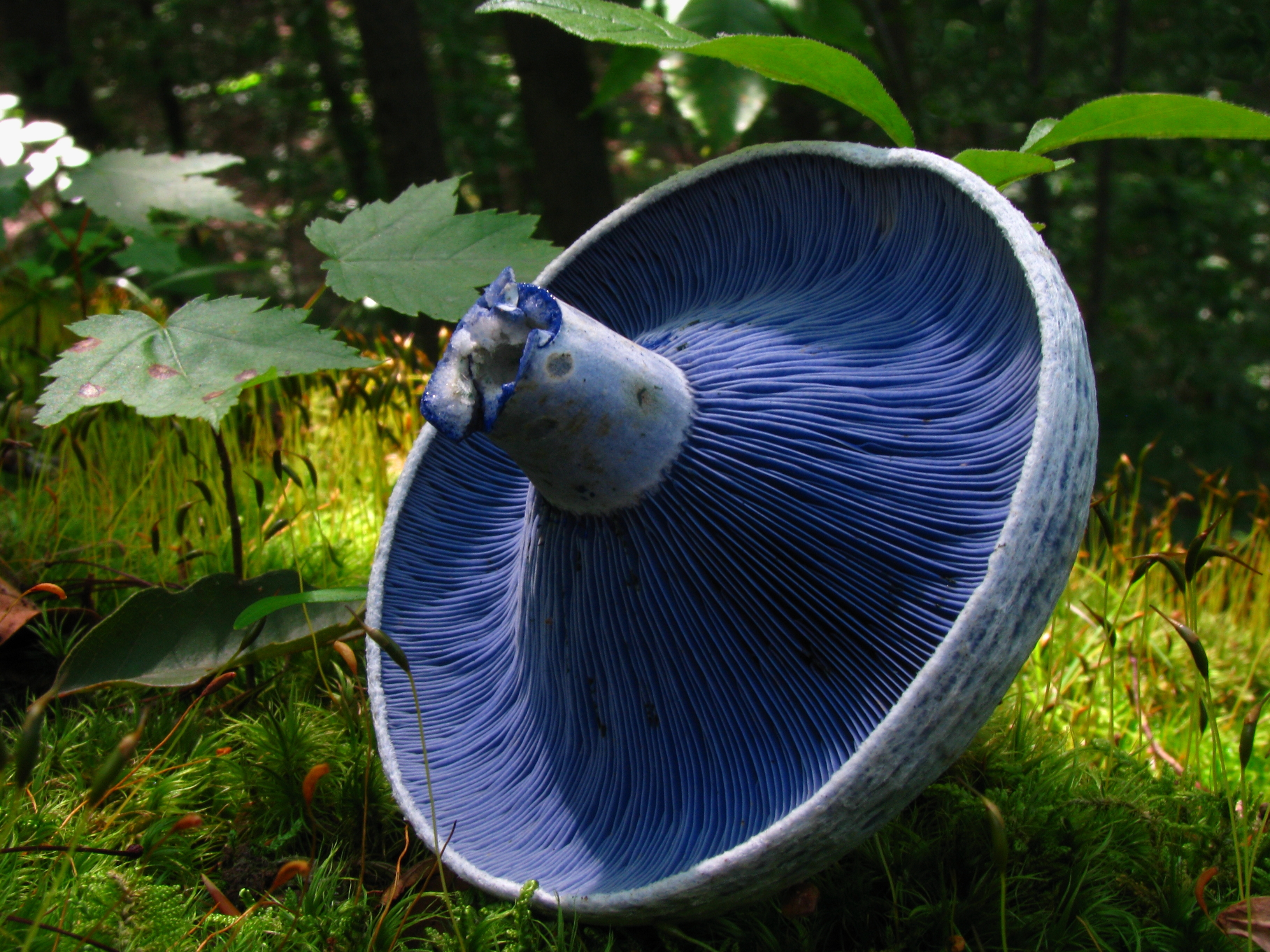Blog

#bioPGH: Mushroom Colors
 A resource of Biophilia: Pittsburgh, #bioPGH is a weekly blog and social media series that aims to encourage both children and adults to reconnect with nature and enjoy what each of our distinctive seasons has to offer.
A resource of Biophilia: Pittsburgh, #bioPGH is a weekly blog and social media series that aims to encourage both children and adults to reconnect with nature and enjoy what each of our distinctive seasons has to offer.
We have talked here on the blog a few times about different plant pigments, notably chlorophyll and those involved in the colors of fall, but what about the array of colors found in mushrooms and other fungi? Mushrooms have no need to photosynthesize, thus they have no need for photosynthetic pigments like chlorophyll, but where do all of the reds, yellows and even the blues of mushrooms come from? Let’s explore!
The interesting thing to remember about pigments is that they are chemical compounds that absorb some wavelengths of light and reflect back others — which is what leads us to perceive a color. For example, chlorophyll looks green to us because green wavelengths of light are reflected back. The reason for different light reflections comes down to the chemical structure of the pigments, and this means that the same color can come from multiple pigments. The examples below are just a few of the many, many different pigments that can provide color to our fungal friends.
One question we might ask is why do mushrooms have a variety of pigments if they don’t need them for photosynthesis? In some cases, pigments affect taste, which could help the mushrooms avoid being eaten and survive longer. In other cases, pigments have been hypothesized to serve as something of a natural sunblock for mushrooms, or they may help protect mushrooms from bacterial invaders. There are a variety of possibilities — now let’s get to those colors!
Yellow
If you have houseplants, there is a good chance you have seen the vividly bright yellow “plantpot dapperlings” or yellow parasols. The vivid yellow of these mushrooms come from two variations of the pigment birnbaumin. Some other pigments that can lead to varying shades of yellow include the betalains, sclerocitrin and chalcitrin.

Wikimedia user Ryan Van Gelder, CC-BY-SA-3.0
Reds
The flay agaric — a classic mushroom of fairy ring lore — is known for its bright red cap (though it can vary geographically in yellow and orange hue). The red comes from a complex combination of pigments including betaxanthins and betacyanins, though some pigments have not yet been characterized as they break down so quickly in lab settings. Notably, betacyanin is a type of betalain, which I mentioned above is responsible for some yellows as well! Other betalains are can create shades of red as well as other colors.

Wikimedia user Onderwijsgek, CC-BY-SA-3.0-NL
Orange
Now for an orange fungus that is popular among us! Chicken of the woods is notable for its orange hues, which are largely created by a pigment called polyene laetiporic acid A (two related pigments, polyene laetiporic acid B and C, also play a role.) Shades of orange can also come from such pigments as leaianafulvene and carotenoids, the latter of which you have probably heard of from plants!
.jpg)
Wikimedia user Gargoyle888, CC-BY-3.0
Blues
If there was an example that not all pigment names are easy, the blue behind the indigo milkcap mushroom is good evidence. This pigment is called 1-stearoyloxymethylene-4-methyl-7-isopropenylazulene.

Wikimedia user Dan Molter, CC-BY-SA-3.0
This is all just scratching the surface, but I hope it has you intrigued! Nature is full of surprises and secrets; all we have to do is look for them.
Connecting to the Outdoors Tip: If this has you itching to explore, the Western Pennsylvania Mushroom Club still has a few walk events planned this year!
Continue the Conversation: Share your nature discoveries with our community by posting to Twitter and Instagram with hashtag #bioPGH, and R.S.V.P. to attend our next Biophilia: Pittsburgh meeting.
Resources
Rao et al: Fungal and Bacterial Pigments - Secondary Metabolites with Wide Applications
Encyclopedia Britannica: Anthraquinone dye
Gmoser et al 2017: Filamentous ascomycetes fungi as a source of natural pigments
Common Mushrooms Produce Unique Pigments
Select photos © Wikimedia User: Kbh3rd (CC BY 3.0); Wikimedia User: Jsadlow (CC BY 3.0)

